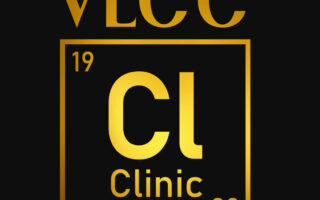In recent years, the cosmetic industry has seen a growing trend: the rise of non-invasive treatments. More people are turning to procedures like Botox, dermal fillers, thread lifts, and laser treatments for their efficiency, minimal recovery time, and lower cost. These options provide effective results without the need for surgery or lengthy post-operative care, appealing to individuals looking for quick and subtle enhancements.
Non-invasive cosmetic procedures, as the name suggests, involve little to no incisions or surgery. They address a wide range of aesthetic concerns such as fine lines, wrinkles, skin tightening, and even fat reduction using advanced technologies. The appeal lies in the ability to achieve noticeable results with minimal disruption to one’s daily life.
The Growing Popularity of Non-Invasive Procedures
A significant factor driving the rise in non-invasive treatments is the growing desire for procedures that offer convenience. In a fast-paced world where people are reluctant to spend weeks recovering from surgery, treatments with little to no downtime have gained immense popularity. According to a report by the American Society of Plastic Surgeons (ASPS), non-invasive procedures now far outnumber surgical options, with the trend continuing to rise.
Dr. Pinky Devi Ayyappan, a renowned plastic and cosmetic surgeon based in Bangalore, and her clinic, PinkApple Aesthetic. She has been instrumental in embracing cutting-edge technology and procedures that align with the growing demand for non-invasive treatments. Let’s delve deeper into the world of non-invasive cosmetic procedures, the trends that are shaping the industry, and why they are becoming the go-to option for people seeking natural beauty enhancements.

Key reasons for the shift include:
- Minimal Downtime: Unlike surgical interventions, non-invasive treatments allow patients to return to normal activities almost immediately, making them a convenient option for those with busy schedules.
- Lower Risk: These procedures come with fewer risks compared to surgery, reducing complications such as infections, scarring, or anesthesia-related issues.
- Natural Results: Non-invasive treatments often work by enhancing the body’s natural processes. For instance, they may stimulate collagen production or subtly reshape certain areas, providing a more natural look than some surgical results.
- Affordability: Though some procedures require multiple sessions for optimal results, the overall cost is generally lower than undergoing surgery, making non-invasive treatments a more budget-friendly option for many.
Emerging Trends in Non-Invasive Cosmetic Procedures
The landscape of non-invasive treatments is evolving rapidly, driven by technological advances and growing consumer interest. Here are a few popular options shaping the industry:
- Botox and Dermal Fillers: These are some of the most widely known treatments, designed to reduce wrinkles and fine lines. Botox relaxes muscles that cause wrinkles, while fillers add volume to areas affected by aging. Both offer immediate, subtle results.
Read Related blog : What’s the Difference Between Botox and Fillers?
- Laser Skin Resurfacing: Using targeted laser technology, this treatment improves skin tone, texture, and elasticity by promoting collagen production. It’s effective for treating wrinkles, blemishes, and acne scars without the need for surgery.
- CoolSculpting: This procedure uses cryolipolysis to freeze and eliminate fat cells in specific areas. It’s a popular choice for body contouring without the need for invasive liposuction.
- Microneedling with Radiofrequency: This treatment enhances skin texture and reduces wrinkles by using radiofrequency energy to stimulate deeper layers of the skin. It’s a minimally invasive option that yields significant improvements.
- Ultherapy: Focused on lifting and tightening the skin around the face, neck, and décolletage, Ultherapy uses ultrasound energy to stimulate collagen production deep within the skin.
- Chemical Peels: While chemical peels have been available for a long time, newer, gentler formulations have made them increasingly popular. These treatments exfoliate the outer layer of the skin, revealing a refreshed and rejuvenated complexion.
The Role of Technology in Cosmetic Enhancements
Technological advancements have been a major driving force behind the surge in non-invasive cosmetic procedures. Today’s treatments are more precise and targeted, thanks to the development of sophisticated tools like lasers, ultrasound devices, and radiofrequency equipment. These advancements allow practitioners to achieve better results with less risk and discomfort for the patient.
Many non-invasive treatments also work by encouraging the body’s natural healing processes. For instance, treatments that stimulate collagen production not only provide immediate benefits but often continue to improve skin texture, firmness, and elasticity over time.
A Thoughtful Approach to Non-Invasive Cosmetic Enhancements
As non-invasive procedures become more popular, it’s important for individuals to approach them with care. While these treatments offer many benefits, it’s essential to seek qualified practitioners who prioritize safety and personalization. The growing availability of these treatments also means that consumers should do their research to find reputable providers who adhere to ethical practices and deliver natural, effective results.
In conclusion, the future of cosmetic enhancements is increasingly non-invasive, thanks to technological advancements and a shift in consumer preferences. These procedures offer a more convenient, affordable, and lower-risk alternative to traditional surgery, making aesthetic enhancements more accessible than ever. As the industry continues to evolve, it’s clear that non-invasive treatments will play a central role in shaping the future of cosmetic beauty.
Explore the future of cosmetic enhancements with a thoughtful approach, and consider the promising possibilities that non-invasive procedures offer.




